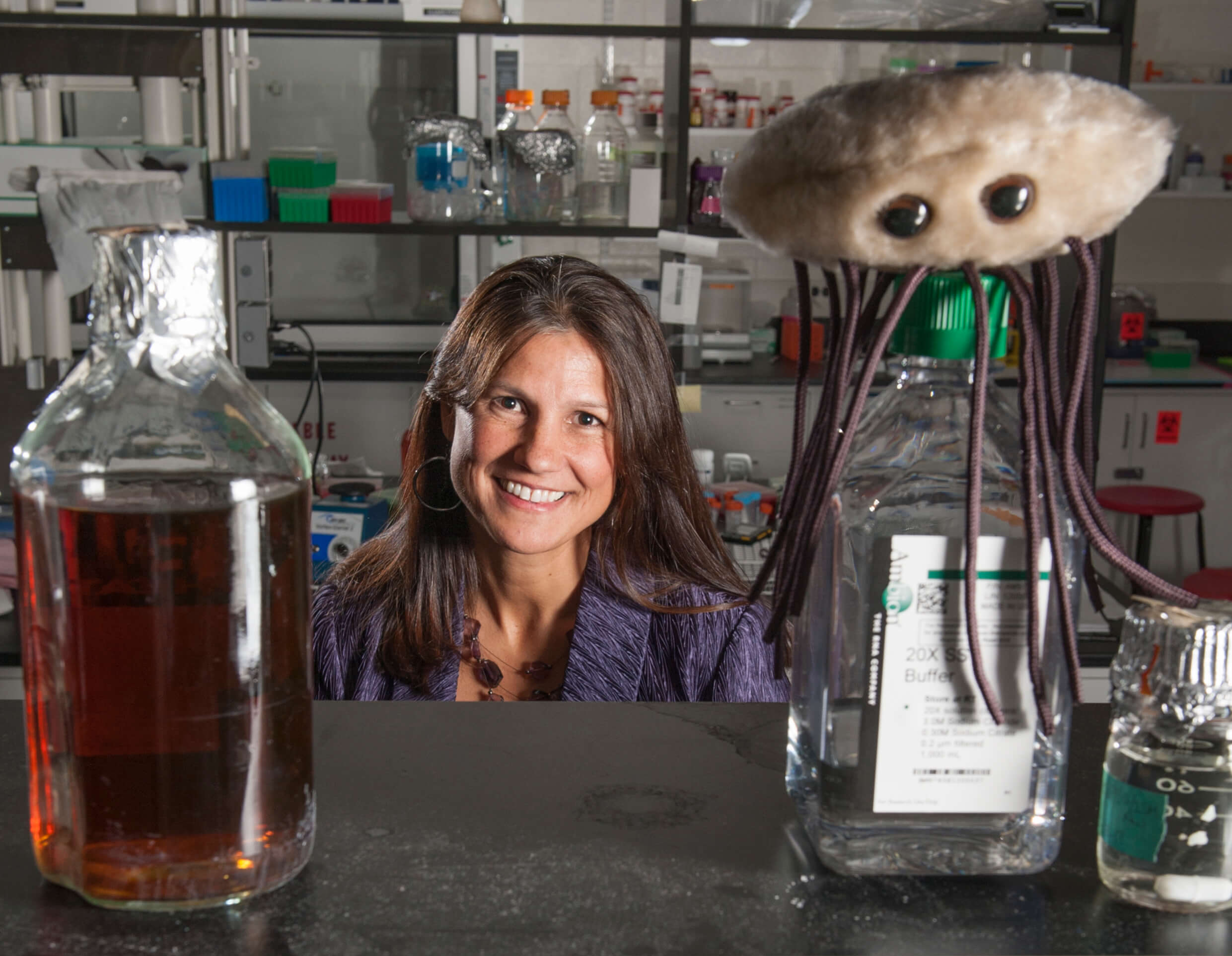Summer is the time for grilling, but as cooking moves from the kitchen to the patio, unwelcome bacterial guests can tag along for dinner.
While most bacteria are actually beneficial, certain germs can grow on food and cause foodborne illness, or food poisoning, when eaten. The Centers for Disease Control and Prevention estimates 48 million people are sickened by foodborne bacteria every year.
Most illnesses result in minor, flu-like symptoms, including upset stomach, nausea and vomiting, diarrhea, fever and dehydration. But some illnesses can result in hospitalization and even death.
Now, researchers like Shannon Manning, an MSU Research Foundation Professor, are showing foodborne illnesses pose another threat: They’re spreading antibiotic resistance.
With grilling season in full swing, the College of Natural Science took this opportunity to catch up with Manning to discuss the harmful bacteria that can ruin a summer party.
The following discussion has been edited for length and clarity.
How big of a problem is foodborne illness in Michigan and the U.S. in general?
About one in six Americans are sickened by food poisoning every year. The old, young, immunocompromised and pregnant patients are the most susceptible. According to the CDC, foodborne illness hospitalizes about 128,000 people every year, resulting in 3,000 deaths.
The CDC maintains a surveillance program called FoodNet, which separates the country into ten regions. FoodNet tracks 31 different disease-causing bacteria that can be transmitted through food products in the ten regions to identify hot spots for disease and emerging infections.
FoodNet represents only 15% of the U.S. population so Michigan is not surveilled directly. The Michigan Department of Health and Human Services does monitor foodborne illness and has determined that the rates in the state mirror the FoodNet sampling of the upper Midwest region. Because Michigan may have unique features relative to other states, it is important to continue to monitor these infections at the state level as well.
How can people protect themselves from foodborne illness?
It is important to follow simple food safety practices that are recommended by the FDA.To prevent foodborne illness, follow these four steps.
Clean: Wash your hands before, during and after cooking. Wash the outside rind of fruits and vegetables, including melons, before cutting.
Separate: Use different cutting boards, knives and utensils for meat and vegetables to avoid cross contamination. Use different plates and utensils for raw and cooked meat.
Cook: Cook meat to the proper minimum internal temperature.
Chill: Transport foods in an insulated cooler and store leftovers in shallow containers in the refrigerator or freezer.
How does the public’s perception of foodborne bacteria match with reality?
In 2018, the Pew Research Center released a report that examined the public’s perception of food safety, especially regarding the use of antibiotics in food animals and genetically-modified foods. They found that one-third of respondents were concerned by the use of antibiotics in animals and pesticides on plants. I was surprised this number was so low.
In reality, we are really concerned about antibiotic use in livestock. If you give livestock antibiotics, the pathogenic, or disease-causing, bacteria could acquire or harbor resistance genes.
These genes allow the bacteria to evade the effects of antibiotics and survive in the food products like meat, which can get transmitted to consumers. The FDA and the World Health Organization have implemented new guidelines that limit the use of certain antibiotics in food animals, especially those that are considered clinically important to treat human infections.

